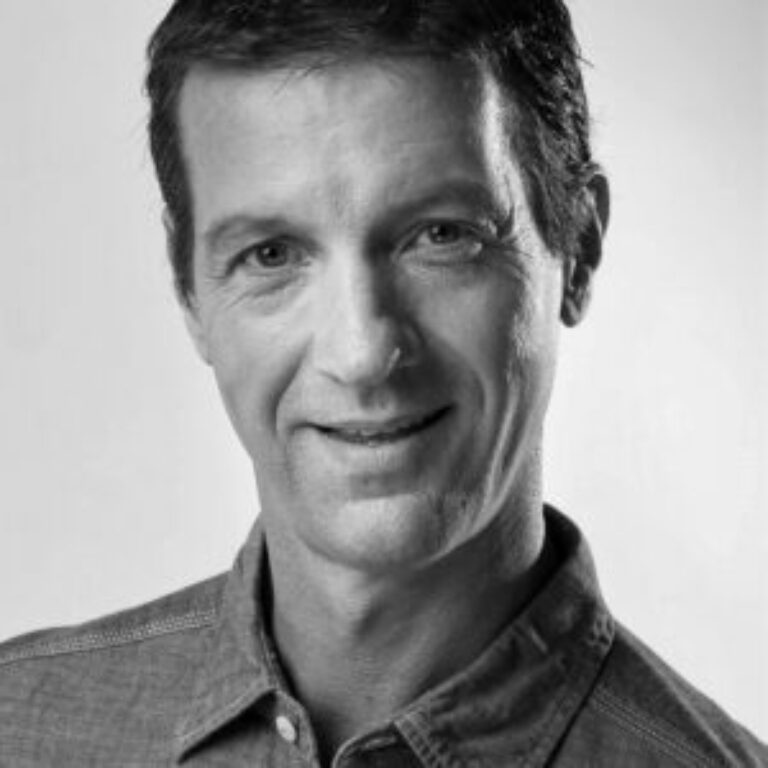
In the Director’s Craft – Essential Reading, Part 2, we continue to outline the key points of Katie Mitchell’s rigorous approach in her seminal book ‘The Director’s Craft – A Handbook for the Theatre’.
Mitchell opens this section by emphasising the need for patience. Frustration often arises from an impatient desire for quick results. The process of finding character is usually a long one and the rehearsal room needs to facilitate this development.
“Create a rehearsal room culture that encourages the gradual construction of strong and durable characters and situations.” – Katie Mitchell
Next, she offers 12 golden rules for working with actors. In the book, she elaborates on each, but in simple point form they are:
After this, Mitchell discusses the importance of establishing a common language. Every director (and actor) has their own vocabulary, but using a host of different terminology on the same production is counter-productive. She therefore recommends directors taking time to think about their use of language and then clearly introduce this to the cast.
An example from Mitchell’s own vocabulary is the word “affinities”, which means our natural inclination to focus on the elements we like. She uses the term to remind actors they must adopt an objective approach to analysis rather than only moving toward the choices that resonate. Another word she likes to use is “practice” rather than “rehearse”.
She also avoids blanket adjectives like “good”, “bad”, “right” and “wrong”, instead choosing words like “clear” and “unclear” or “specific” and “unspecific”. This segues into her next part which is on how to give feedback to the actors.The first point she makes is to remain consistent through the entire process, regardless of if it’s an impro, a run through or a tech rehearsal.
Shifting language, tone and approach mid-way through the process will only confuse the actors and likely be counter-productive to what you’re hoping to achieve. Mitchell goes on to provide a checklist of areas she references in offering feedback. These include:
This covers all the foundation work the director did in prep, which can now be used to accurately guide the actor. She also stresses the importance of giving short, simple sentences and staying specific. She even goes so far as to say that if the director doesn’t know how to say something concisely, don’t say it at all. Finally, she reminds directors to give praise in equal measure to criticism.
Next, Mitchell moves onto dealing with first day nerves. She suggests something physical as a starting point. A movement workshop. Some simple choreography. Anything to get the actors out of their heads and into their bodies.
She also strongly discourages a formal read-through with an invited audience, instead opting for a reading where everyone sits in a circle and each person reads one line, including stage directions. This removes all pressure from the actors and often results in a fun, pacey first encounter with the text.
Here is where all the work done in prep, really comes to the fore. Mitchell introduces the concepts of facts and immediate circumstances to the actors. Afterwards, she has them go through the text making their own lists. As with the director’s approach, the actors also make a separate list of questions that become the source of their own research.
She then has them conduct extensive research into all the key areas such as time, place and immediate circumstances. This process, naturally, isn’t covered in just one rehearsal. It crosses over numerous days and leads into a practical analysis of the play. She has the actors determine the key ideas and then how these might apply to their life. She has the actors create a short improv around this moment, noting any useful details that could be used to connect with their characters.
She also discusses working on emotions, which follows a similar process to that above. Instead of focusing on events, the actors discuss the core emotions of the piece and again, how any of them could apply to their life.
“Of course, selecting one dominant emotion does not exclude the wide range of other emotions expressed in the play. However, drawing attention to one emotion sets the tone for the precision with which all emotions are to be investigated and re-enacted in the production.” – Katie Mitchell
Character biographies are also addressed, with the director and actor conferring on their respective breakdowns. Importantly, the actors also need to work together on ensuring all backstories are congruent. This then evolves into work on the relationships and how characters see the people around them.
The term Mitchell likes to use is “building shared pictures” which the actors can collectively reference as they practice the scenes. It ensures everyone’s using the same playbook so to speak.
Mitchell’s approach to rehearsing the scenes is interesting. For one thing, she’s a big advocate of improvisations. But with a very clear structure. This ensures the action remains focused and directed toward a specific purpose. For example, she’ll have an impro that focuses on only place. Or time. Or the immediate circumstances.
All the core elements that formed the foundation of her preparation process. As for what she improvises, it could be anything that anchors key moments in the play.
The trigger event is one, that she introduces in Part One. The “trigger event” is simply the moment that forms the catalyst for everything which follows prior to the play’s beginning. Knowing what this is forms a launching pad from which other creative choices can stem, and Mitchell will often improvise it.
Other areas she may improvise are defining moments within the character’s biographies, immediate circumstances or things that happen between acts. The essential element is to be specific in terms of context so that actors are highly focused in their purpose.
She also addresses the issue of actors who may be resistant to the ideas being improvised. Her advice is to start by assuring them improvising is only ever an exploration. Concrete decisions won’t be made until much later. But if the actor still doesn’t want to do it, then asking them to come up with an alternative and improvising that is an option.
Of course, this means coming up with context-specific instructions on the fly. However, the prep done beforehand means the director is well equipped to deal with unexpected developments.
The closing section of Part 2 focuses on getting the play up and running which according to Mitchell accounts for around 60% of rehearsals. She first goes through the events and intentions, and has the actors write down what they are. Once these are collectively agreed upon, Mitchell has them read the scene with intentions acting as a guide.
After that, they’ll go through the immediate circumstances, time and place before finally getting the scene on its feet. Here, Mitchell doesn’t allow the actors to hold the text. In fact, she’s adamant that when rehearsing, the actors should never be holding their scripts. The “practice” is a mix of what the actors remember, and what they improvise.
She uses this template as the basis for all her rehearsals, emphasising that initially, most of the scene will be improvised. But then as the actors move into practising the scene a second and third time, the content should become more aligned with the text.
“This way of working on early scene rehearsals was a revelation to me when I first came across it. For years I had struggled with the transition from early improvisations to work on the scenes of the play. I loved the fluidity and ease of an improvisation and hated the constipation and tension of the early scene rehearsals. The idea of mixing words from the play with words from the actors’ imaginations was a perfect way of building a bridge between these two stages of rehearsals.”
For many directors, blocking is where their rehearsal process begins. However, Mitchell lets it evolve organically in response to the actors’ intentions. The strength of this approach is it prevents inauthentic movement from the actors.
Whether the audience is conscious of it, or not, a disconnect occurs when an actor moves simply because the director has told them to. Blocking that engages and establishes clarity is only possible with a specific purpose driving the decisions.
And for directors who are not visually orientated or struggle with building clear pictures on stage, Mitchell suggests studying painters such as Caravaggio, Vermeer or Edward Hopper to see how they use composition and colour to focus action.
The most important part of a run through, according to Mitchell, is to keep the same tone as all other rehearsals. After that, be very clear with notes. Try to allow plenty of time, rather than cramming them in at the very end of rehearsal. She also likes to ask the actors their thoughts before commencing. It gives them the chance to identify issues, some of which may be in the director’s notes.
The last point she raises is that as the run throughs progress, expect tensions to rise. Actors may become increasingly resistant to notes, but the trick is to remain patient and remember it’s just an expression of their fear that opening night is fast approaching.
This section is the shortest (excluding Part Four) and covers all the aspects of dress rehearsal, tech runs, opening night and managing the first few shows. She offers a generalised overview on light plotting and programming sound cues. And finishes up by discussing how to deal with press night, giving notes to the actors after the run has started, and analysing your own work after the show has ended.
As previously mentioned, Part Four is simply a summary of the influences that have helped shape her entire approach.
Obviously, there are many other components to the book that haven’t been covered here. One of the very useful tools Mitchell uses is Anton Chekhov’s The Seagull to exemplify each step. Particularly throughout Part One, the way she gives practical illustrations is extremely helpful in facilitating understanding.
She also provides a listed summary of key points at the end of every section, further clarifying her ideas.
And then of course, there’s the overall tone of the book, which is anchored in the confidence and authority that only comes about from someone who knows what they’re talking about.
‘The Director’s Craft – A Handbook for the Theatre’ is truly an essential resource for anyone looking to develop their craft as a stage director.

Also by Sheepdog Theatre:
The Director’s Craft – Essential Reading: Part 1
The Importance of An Authentic Theatre


Michael Walker has worked as an actor, writer and director in Japan, Australia, the UK and the US. His acting credits include commercials, television shows and feature films. He was also the founder of maidenagoya, Nagoya’s first foreign-led, independent theatre company. Amongst the numerous shows he directed was Martin Sherman’s Bent, and a bilingual version of Romeo & Juliet, which toured Tokyo after its Nagoya season. Along with his theatre work, Michael is an experienced screenwriter who has had films play at festivals around the world. He is currently living in Tokyo and is the Artistic Director of Sheepdog Theatre.
Read Full Profile© 2021 TheatreArtLife. All rights reserved.

Thank you so much for reading, but you have now reached your free article limit for this month.
Our contributors are currently writing more articles for you to enjoy.
To keep reading, all you have to do is become a subscriber and then you can read unlimited articles anytime.
Your investment will help us continue to ignite connections across the globe in live entertainment and build this community for industry professionals.